How to Make Japanese Milk Bread
If you’ve never heard of milk bread, you’re in for a treat. Using a special technique and following our step-by-step tutorial, you’ll soon be creating the most incredible, pillowy soft, subtly sweet, and airy bread (or rolls) you’ve ever tasted. Trust us.
by Pamela Killeen
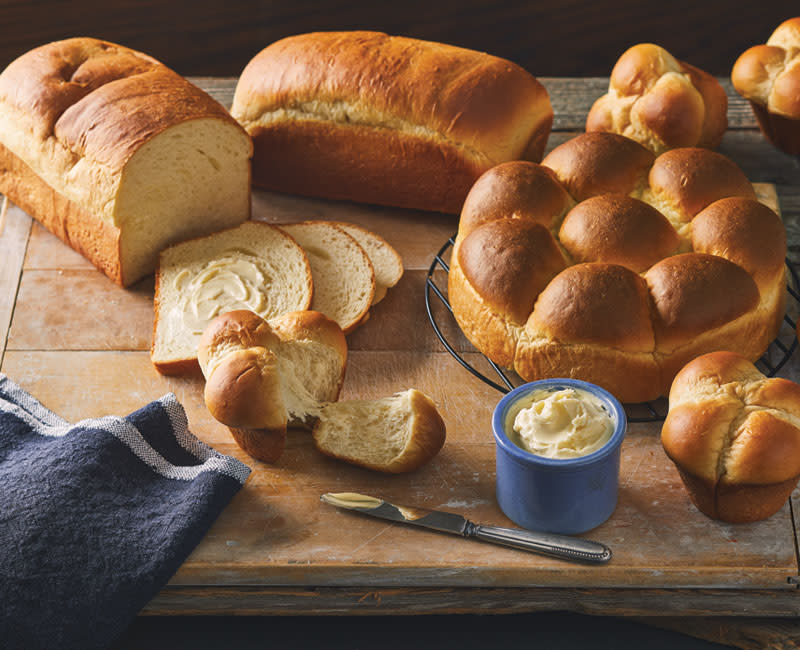
What is Japanese Milk Bread?
Milk bread is pretty much just like it sounds — bread that’s made with milk, though it’s not that simple. It’s a yeast dough enriched with butter, sugar, and egg. But what really sets it apart is an ancient Japanese technique, called tangzhong, which makes for extremely tender, fluffy, lighter-than-air bread. A little nonfat dry milk powder aids in the bread’s tenderness and flavor, and helps it stay fresher longer. Plus, because it’s a superhydrated dough, that also helps keep the bread fresher longer, too. But what would milk bread be without some milk? It not only adds to the hydration, but gives the dough even more richness — it truly is ethereal.
And once you make the dough and let it rise, all you need to do is decide how you want to shape it — into a loaf or rolls. We show you how to shape it into a standard loaf and two different types of rolls — dinner rolls baked in a cake pan, or clover leaf rolls baked in a jumbo muffin pan. After baking, a quick brush of melted butter is all this bread needs. The hardest part is waiting for the bread to cool.
For full ingredients and directions, grab our Milk Bread recipe and follow along.
Key Technique: Tangzhong — How It Works
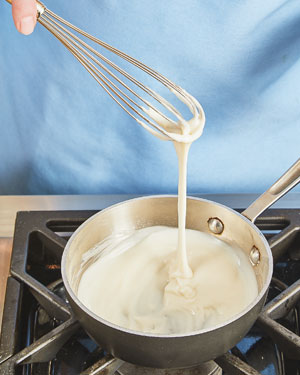
Tangzhong [tang-CHUNG] involves cooking a portion of the flour and liquids to make a pudding-like paste, which then gets combined with the rest of the ingredients. By heating a portion of the liquids, more liquid can be added to the dough, because flour absorbs twice as much hot liquid as it does cold. This makes for a super-hydrated dough that yields bread that is both moist and fluffy, because the liquid converts to steam, acting as a leavening agent, thus creating rise. This level of hydration also impacts the gluten development, giving the dough structure to hold onto the steam versus letting it escape.
Watch our video on Making Tangzhong Paste.
How to Make Milk Bread
Before You Get Started: Measure Bread Flour by Weight
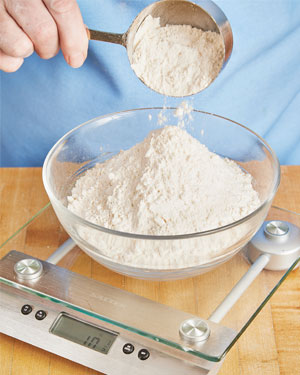
Even when you employ the scoop and level method of measuring flour, each cup can weigh a slightly different amount due to settling, weather conditions, and other factors. For this reason, and the most accurate measurement, you should always weigh your flour. When making this recipe, 2½ cups (+/- 1 Tbsp. or so) of bread flour (scooped and leveled) was a fairly accurate and consistent measurement yielding 11 ounces.
Step 1: Make the Dough
For full ingredients and directions, grab our Milk Bread recipe and follow along.
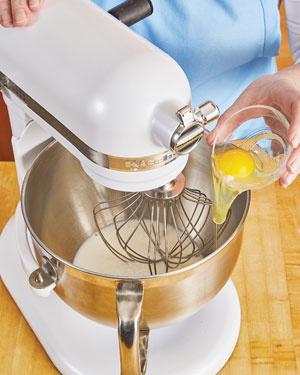
Mixing cold milk with the hot paste quickly cools the mixture so you can add an egg without it scrambling.
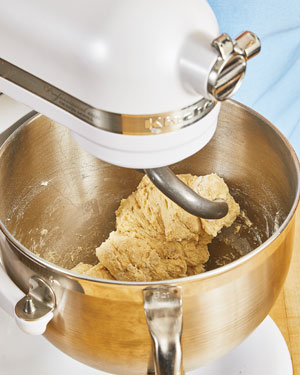
After mixing in the flour, dry milk, and yeast, allow the dough to rest 15 minutes. This helps with gluten development.
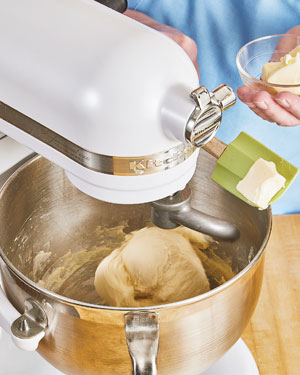
Since fat (butter) makes the gluten strands slippery, wait to add it until the last five minutes of kneading in the mixer.
Step 2: Knead the Dough

To develop adequate structure, knead the dough in a mixer 10 minutes before kneading on a surface 30–60 seconds.
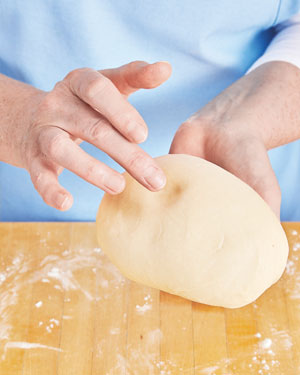
You know the dough is kneaded enough when its smooth and elastic (and slowly springs back when pressed).
Step 3: Deflate the Dough
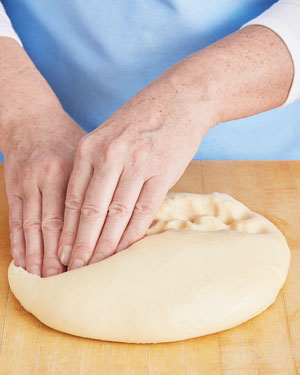
Since this dough yields a small-crumb bread, you want to gently, but firmly expel the air from the dough prior to shaping into a loaf or rolls.
Step 4: Shape the Dough
How to Shape a Milk Bread Loaf

Simply press the dough into a 9-inch-wide rectangle, roll it into a 9-inch-long log, then place the log, seam side down, into prepared loaf pan.
How to Shape Milk Bread Dinner Rolls
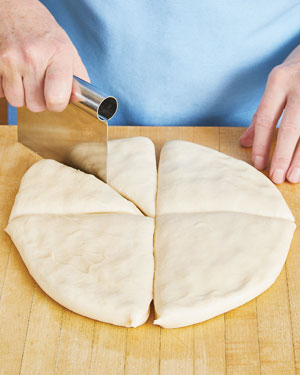
Cut the dough into eight portions with a bench knife. Tearing it breaks the gluten strands in the dough, causing dense rolls.
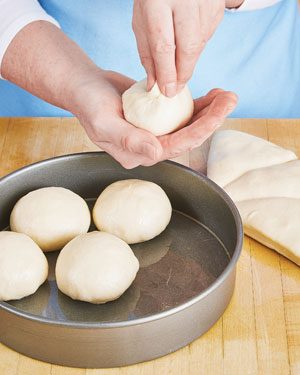
Then, simply hold one dough portion in your palm, pull up the sides, and pinch the bottoms closed; arrange, seam sides down, in prepared 9-inch-round cake pan.
How to Shape Milk Bread Clover Leaf Rolls
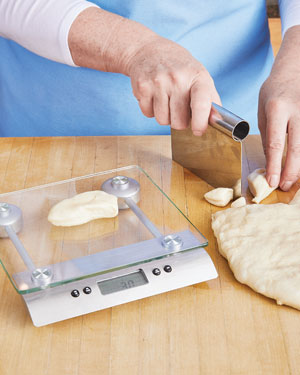
Cut the dough into 24 portions with a bench knife. You can eyeball it, or for more uniform-sized rolls, use a scale to weigh the portions.
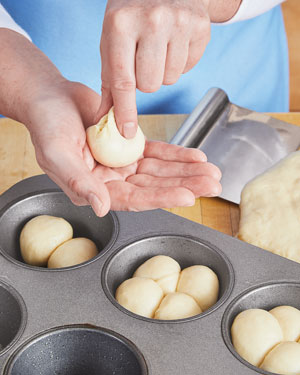
Like the dinner rolls, hold each dough portion in your palm, pull up the sides, pinch the bottoms closed (makes for a taut surface), then arrange four balls in each well.
Don't forget to reference our Milk Bread recipe for full ingredients and directions.
Product Recommendations
Interested in cooking? Need some supplies?
Check out some of the tools we like. All products featured on Cuisine at Home are independently selected by our editors; we may earn an affiliate commission from qualifying purchases through our links.